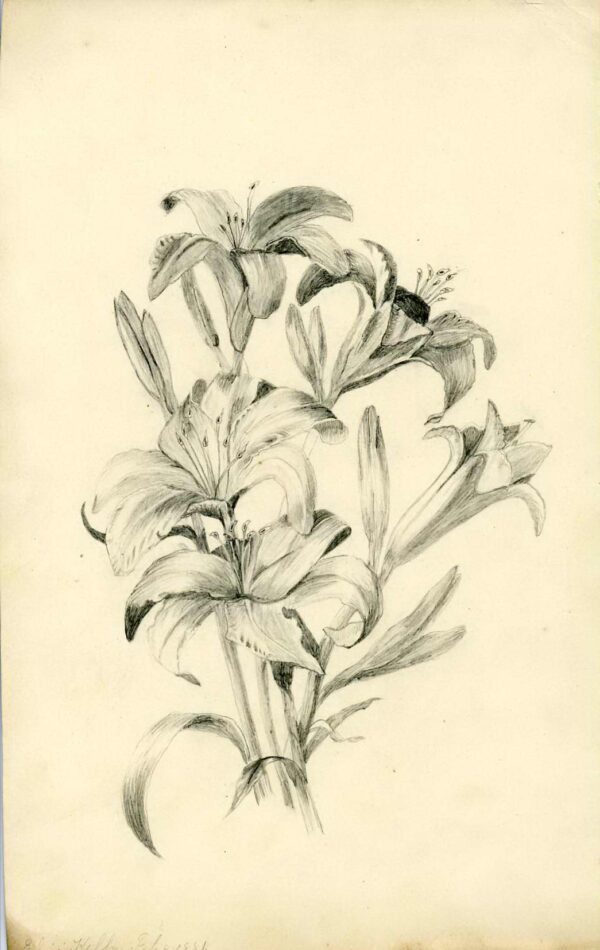With Mother’s Day weekend fast approaching, a brief history of the holiday in the United States is in order. The popularity of the holiday in this country is due to the efforts of three women. In 1858, Ann Reeves Jarvis of West Virginia organized the first of her “Mothers’ Day Work Clubs,” which served as parenting classes for women to learn how to care for their children. In 1868, she helped to plan “Mothers’ Friendship Day” to bring together mothers and former Union and Confederate soldiers to aid in reconciliation after the Civil War.

Lilies from the Kelley House pond, drawn by Elise Kelley in 1881.
The idea of mothers and women working to create peace was also the primary focus of Julia Ward Howe’s Mother’s Day Proclamation of 1870. Howe, the pacifist/abolitionist who penned “The Battle Hymn of the Republic” in 1862, advocated for a day when women of all nationalities would gather together “to promote the alliance of the different nationalities, the amicable settlement of international questions, the great and general interests of peace.” The goals of both women were to reach a time when no mother would have to mourn the loss of her children to war.
After the death of Ann Reeves Jarvis in 1905, her daughter, Anna Jarvis, began to work towards the creation of Mother’s Day as a national holiday because she believed a mother is “the person who has done more for you than anyone in the world.” In 1908, Jarvis held a memorial ceremony to honor her mother and all mothers at Andrews Methodist Episcopal Church in Grafton, WV. This caught the attention of the state government, leading to West Virginia becoming the first to adopt Mother’s Day as a state holiday. Its popularity kept increasing and, by 1911, all the states observed Mother’s Day in some form. Finally, in 1914, Woodrow Wilson signed a proclamation declaring the second Sunday of May as a national holiday to honor mothers.
The first reported observance of Mother’s Day in Mendocino was on May 16, 1909, at the Presbyterian Church. Everyone was requested to wear a white flower in honor of the day. In particular, a white carnation was the flower chosen by Anna Jarvis to represent the purity, sweetness, and faithfulness of mothers. The gifting of white carnations was meant to bring good luck to the mothers who received them, and flowers remain a staple for the holiday. More importantly, Jarvis encouraged everyone to visit and spend time with their mothers.
An excellent way to spend some time with your mother over Mother’s Day weekend is to join one of the historic district walking tours offered by the Kelley House. On the tour you will visit New England-style pioneer homes, learn why Mendocino was known as the city of water towers, and enjoy its rich cultural heritage, from the Pomo tribes that lived here for thousands of years, to the European and Chinese immigrants who built the town you see today. All the while you and your mom can revel in the beautiful new blooms of spring.
Historic District Walking Tours will begin at 11 AM on Saturday, May 13th and Sunday, May 14th. Tours cost $20 per person and last approximately 2 hours; all tours meet by the flagpole on the Kelley House lawn. Tickets can be purchased online, in person, or requested via email. Drop-ins are welcome.
The Kelley House Museum is open from 11AM to 3PM Thursday through Monday. If you have a question for the curator, reach out to curator@kelleyhousemuseum.org to make an appointment.